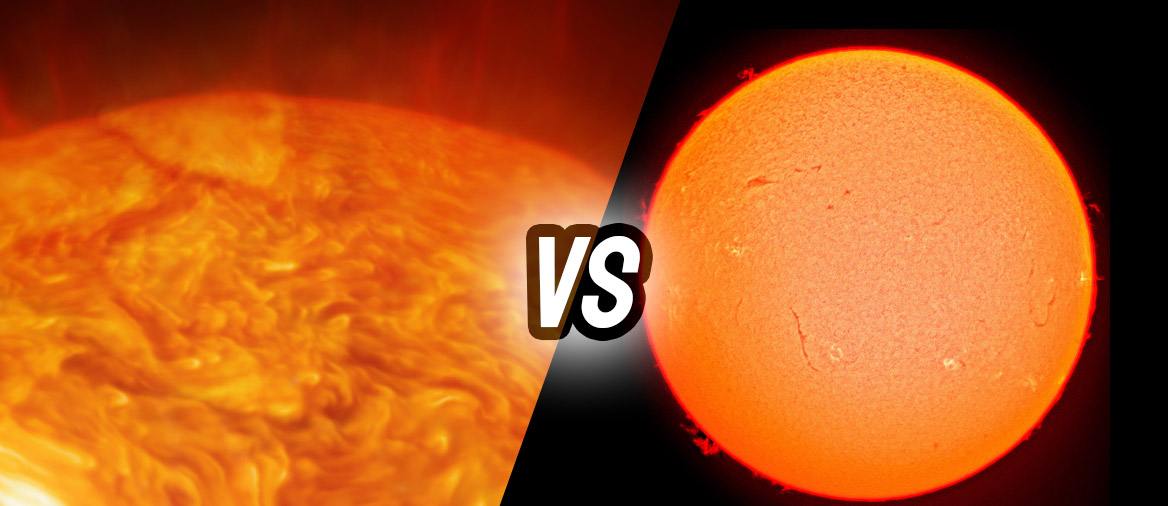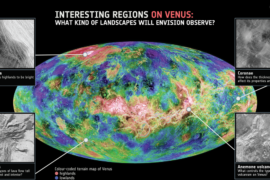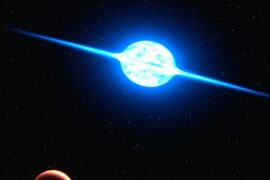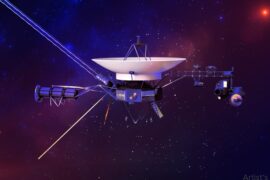Betelgeuse is one of the most prominent and easily distinguishable stars in the night sky. Its red color and the fact that it is the tenth brightest star that we can see from Earth make it easily recognizable. This has also made Betelgeuse a popular target of study for scientists and astronomers and it has paid off. Today, we know a lot about Betelgeuse.
But numbers in stellar scales can be confusing. The distances and sizes are so large that they stop making sense in our brains by themselves.
A good way to really understand what this data means is to compare it to the numbers of our own star.
In this article, we’ll compare Betelgeuse vs the Sun and learn more about their differences and similarities so you can get a better idea of the importance of this red giant.
Betelgeuse vs Sun comparison
| Betelgeuse | Sun | |
| Alternative names | Alpha Orionis | Sol |
| Constellation | Orion | N/A |
| Type | Red supergiant | Yellow dwarf |
| Apparent magnitude (brightness) | −3.00 | −26.74 |
| Radius | Between 764 and 1,021 Solar radius | 1 Solar radius (695,700 km) |
| Mass | Between 16.5 and 19 Solar masses | 1 Solar mass (1.9885×1030 kg) |
| Luminosity | Between 90,000 and 150,000 Solar luminosity | 1 Solar luminosity (3.828×1026 W) |
| Temperature | 3,800 K | 5,772 K |
| Rotation period | 36 years | 25.38 days |
| Rotation speed | 5.47 km/s | 1.99 km/s |
| Distance from Earth | 548 light-years (3.4×107 AU) | 1 Astral Unit (1.496×108 km) |
| Age | 8.5 million years | 4.6 billion years |
| Designations | α Ori, 58 Ori, HR 2061, BD+7°1055, HD 39801, FK5 224, HIP 27989, SAO 113271, GC 7451, CCDM J05552+0724, AAVSO 0549+07 | N/A |
As you might have noticed in the table below, a lot of the units used to measure Betelgeuse, like its radius, mass, and luminosity are given using the Sun’s corresponding value as 1 unit so they make more sense. Otherwise, you would end up using huge numbers that can be hard to conceptualize. For example, Betelgeuse’s radius in kilometers is somewhere around 617.1 million km (383.3 million miles)
Betelgeuse vs the Sun size comparison
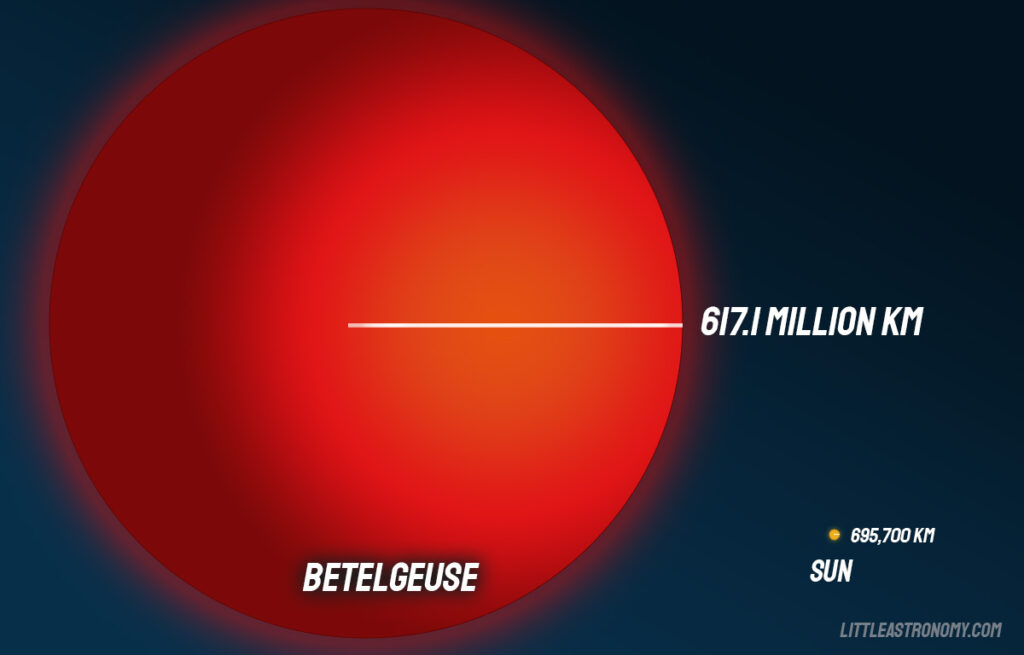
The image above shows the enormous size difference between Betelgeuse and the Sun. Betelgeuse has a radius between 764 and 1,021 times larger than the Sun’s. In volume, that means that you could fit between 446,000 and 1,060,000 Suns into Betelgeuse.
The radius of Betelgeuse has such a large margin of error because it is hard to get exact measurements at such large distances. But even in the lower range, it lives up to its classification as a “red supergiant”.
Betelgeuse and Sun similarities
- Both the Sun and Betelgeuse are stars.
- The Sun is a main sequence star. Betelgeuse has already passed that stage, but it was also a main sequence star at some point.
- Both stars formed in a similar manner, out of a giant cloud of dust and gas in a nebula.
- Both stars, like most other stars, started out with a similar elemental composition. With a high percentage of hydrogen and helium.
Betelgeuse and Sun differences
- The most obvious difference between the Sun and Betelgeuse is their size. Betelgeuse is approximately 1,000 times wider than Earth. This means that you could fit about one million Sun-sized stars in just one Betelgeuse.
- Because of its size, Betelgeuse is also a lot more luminous than the Sun. Its luminosity is between 90,000 and 150,000 times greater than our star’s.
- The Sun has a whole planetary system around it. It is very unlikely that Betelgeuse is orbited by any planets.
- Betelgeuse ia a very young star. It is only between 8 and 8.5 million years old. The Sun is 4.6 billion (with a ‘b’) years old. This makes our Sun 541 times older than Betelgeuse.
- The Sun and Betelgeuse have very different life expectancies. Betelgeuse will go supernova and ‘die’ in the next 100,000 thousand years or so. Red Supergiants like Betelgeuse have lifespans of just 8-10 million years because they burn out really really fast due to their massive size. Smaller stars like the sun have much longer lifespans. The Sun is currently 4.6 billion years old and is expected to last 5 billion years more.
- Betelgeuse takes a very long time to rotate. It takes over 36 years to complete just a single rotation. The Sun rotates once every 25.3 days.
- With that fact above you would think that Betelgeuse rotates very slowly. But that’s not the case. It actually rotates almost 3 times faster than Earth. But it is just so incredibly large that it takes it 36 years to complete one rotation.
- The Sun still has plenty of hydrogen to fuse into its core and generate energy. Betelgeuse has pretty much exhausted all of its hydrogen and is now fusing other elements. This is what will eventually cause it to explode into a supernova.
- Betelgeuse will explode violently into a supernova when it dies. The Sun is not big enough to do that. Instead, it will expand into a red giant, but then it will shrink into a small white dwarf.
Summary
- Betelgeuse and the Sun are very different from each other despite both being stars
- Betelgeuse and the Sun do share some similarities, like the fact they both formed out of nebulas and their initial element composition
- Betelgeuse and the Sun are very different in size, luminosity, rotation time, speed, and the fact that the Sun has a planetary system.
Enjoyed this article?
Get daily 10-minute PDFs about astronomy to read before bed!
Sign up for our upcoming micro-learning service where you will learn something new about space and beyond every day while winding down.

